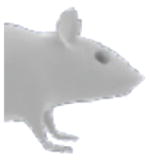Table 2.
Expression and physiological roles of CRTCs’ isoforms.
| Organism | Isoform | Tissue specific expression | Physiological process regulated | References |
|---|---|---|---|---|
 Mouse |
CRTC1 | Brain | Energy balance, fertility | [10] |
| (Hippocampus) Memory formation | [97] | |||
| (Suprachiasmatic nuclei) Circadian rhythm | [118,119] | |||
| CRTC2 | White Adipose Tissue | Insulin Resistance | [52] | |
| Lung | Unknown | [12] | ||
| Liver | Regulation of lipogenesis | [21] | ||
| Gluconeogenesis | [13,29,31] | |||
| Muscle | Mitochondrial biogenesis | [12] | ||
| Immune System | Macrophage M1 to M2 interconversion (promotes insulin sensitivity) | [45] | ||
| T helper (Th)17 cells differentiation | [46] | |||
| Brain | Hypothalamic glucose sensing | [62,63] | ||
| Pancreas | (Beta cells) Insulin secretion | [25,54,55] | ||
| CRTC3 | Lung | Unknown | [12] | |
| White Adipose Tissue | Attenuates response to catecholamine signals | [14] | ||
| Brown Adipose Tissue | Unknown | [14] | ||
| Immune System | Macrophage M1 to M2 interconversion | [71] | ||
 Drosophila |
Crtc | Neurons | Central regulation of metabolism | [58,59,60] |
| (mushroom body) Memory formation | [98,100] | |||
| Circadian rhythm | [120] | |||
| Intestine | Stem cells proliferation | [108] | ||
 C. elegans |
crtc-1 | Neurons | Lifespan Central regulation of metabolism | [3,4] |
| Intestine | Unknown | [3] |
List of CRTCs’ isoforms in mouse, Drosophila and C. elegans, their specific expression and physiological roles.
